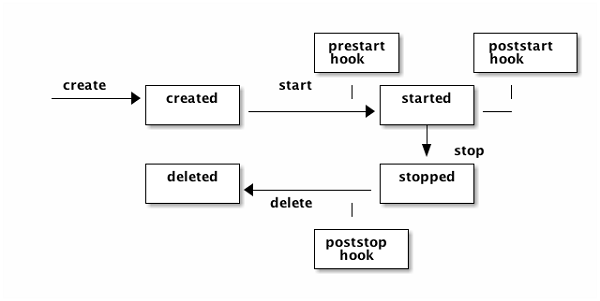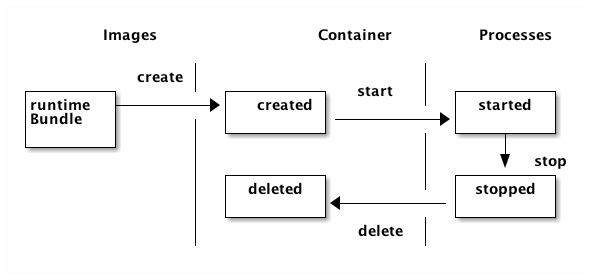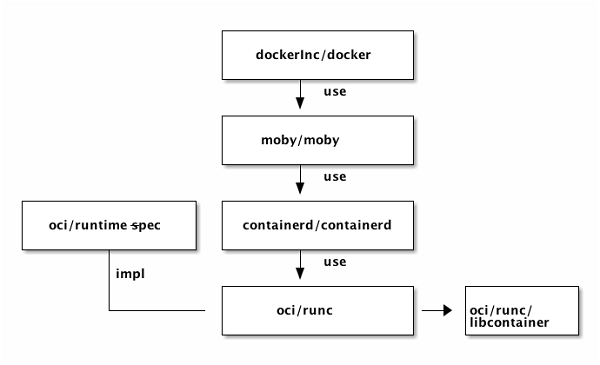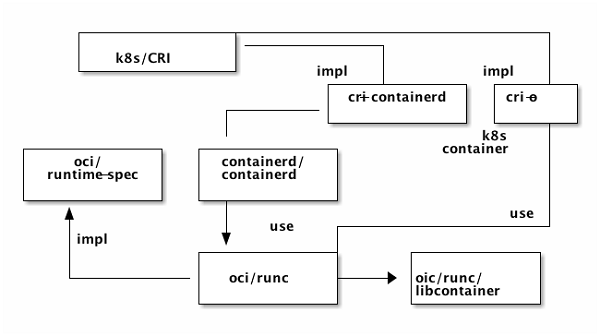By Bin Chen, Alibaba Cloud Tech Share Author. Tech Share is Alibaba Cloud's incentive program to encourage the sharing of technical knowledge and best practices within the cloud community.
OCI (Open Container Initiative) is an industry collaborated effort to define open containers specifications regarding container image format and runtime. The history of how it comes to where it stands today from the initial disagreement is a very interesting story in terms of collaboration and competition in open source world.
Nowadays, all the main players in the container ecosystem follow the OCI container specification. For anyone interested to know how container actually works, it is a great technical source you will not want to miss.
OCI has two specs, an Image spec and a Runtime spec.
Here is a diagram that illustrates what they cover and how they interact.

An OCI Image will be downloaded from somewhere (think Docker hub) and then it will be unpacked into an OCI Runtime filesystem bundle. From that point, the OCI Runtime Bundle will be run by an OCI Runtime. The Runtime Specification defines how to run a "filesystem bundle".
Image specification defines the archive format of OCI container images, which consists of a manifest, an image index, a set of filesystem layers, and a configuration. The goal of this specification is to enable the creation of interoperable tools for building, transporting, and preparing a container image to run.
At the top level, a container image is just a tarball, and after being extracted, it has the layout as below.
├── blobs
│ └── sha256
│ ├── 4297f0* (image.manifest)
│ └── 7ea049 (image.config)
├── index.json
└── oci-layoutThe layout isn't that useful without a specification of what that stuff is and how they are related (referenced).
We can ignore the file oci-layout for simplicity. index.json is the entry point, it contains primary a manifest, which listed all the "resources" used by a single container image.
The manifest contains primarily the config and the layers.
Put that into a diagram, roughly this:

The config contains notably 1) configurations of the image, which can and will be converted to the runtime configure file of the runtime bundle, and 2) the layers, which makes up the root file system of the runtime bundle, and 3) some meta-data regarding the image history.
Layers are what makes up the final rootfs. The first layer is the base, all the other layers contain only the changes to its base. Let's take a closer look at what layer specifications are in the following section.
For layers, the specification essentially defines two things:
tar all the content;tar the changeset compared with its base.changeset; and then tar the changeset, as the representation of this layer.Apply all the changesets on top of the base layer. This will give you the rootfs.
Once the Image is unpacked to a runtime bundle on the disk file system, you will have something that you can run. This is when the Runtime Specification kick in. The Runtime Specification specifies the configuration, execution environment, and lifecycle of a container.
A container's configuration contains metadata necessary to create and run a container. This includes the process to run, environment variables, the resource constraints and sandboxing features to use, etc. Some of the configurations are generic across all platforms including Linux, Windows, Solaris and Virtual Machine specific; but some of them are platform specific, say Linux only.
The runtime specification also defines the Lifecycle of a container, which is a series of events that happen from when a container is created to when it ceases to exist.
A container has a lifecycle, at its essence, as you can imagine, it can be modeled as following state diagram.
You can throw in a few other actions and states, such as pause and paused, but those are the fundamental ones.

The state diagram is conventional but there is one important thing worth mentioning - the Hooks. Probably a little surprise to you, container specifications don't actually define how to set up the network, it actually relies on the hooks to set up the network properly, say create the network before container start and delete it after the container is stopped.
We mentioned before that a container's configuration contains the config necessary to create and run a container. And we will look at some of the configs a little bit closer to get a sense of what is container really about, and we'll focus on Linux platform for all the configurations.
For the Linux process, you can additionally specify things concerning the security aspect of the process, things such as the capabilities, rlimits, and selinux label can be specified here.
| Namespace | Domain / Description |
| PID | Process IDs |
| Mount | Mount points |
| Network | Network devices, stacks, ports, etc. |
| User | User and group IDs |
| IPC | System V IPC, POSIX message queues |
| UTS | Hostname and NIS domain name |
Containers are created from (container) Image. You can create more than one containers from a single Image, and you can also repack the containers, usually with changes to the base image, to create a new Image.
After you get the containers, you can run process inside of that container, without all the nice things about a container. Most notably, once we containerize an app, it is become self-contained and won't mess up with the host environment, and thus it should "run everywhere (TM)".
Here is the relationship between the various concept, Image, Container and Process and it is vitally important to get them right.

Docker makes container an industry trend and there are a lot of people who consider Docker as container and container as Docker. Docker definitely deserves the credit here. But from the technical point of view, Docker is the most widely used container implementation. The architecture of the Docker implementation evolves very quickly from version to version. At the time of writing, it looks like below.

The diagram follows the format of [github]Org/project. Most of the components are originated from Docker, but they are currently under different GitHub organization and project. At the top is the Docker command tool we use daily, it is the commercial offering from Docker Inc.; The Docker tool relies on an open source project called moby, which in turn uses the runc, which is the reference implementation of the oci runtime specification. runc heavily depend on libcontainer, which was donated from Docker, Inc as well.
If we only need to one or two containers, Docker probably is all we need. But if we want to run dozens or thousands of containers we have more problems to solve. To name a few:
That is the job of container orchestration system. And Kubernetes is one of them, but as of now, I think there is no argument it is the most promising one. But we'll not deep dive into Kubernetes here, but will touch briefly from the perspective that how the container runtime fit into the container orchestration platform.
Following diagram illustrate how the Kubernetes interact with the container runtime.

Kubernetes decouple the runtime implementation using Container Runtime Interface. Simply speaking, CRI defines the interface to create, start, stop and delete a container. It allows pluggable container runtime for Kubernetes and you don't have to lock into one particular runtime. There are currently several implementations, such as cri-containerd and cri-o, both of which eventually will use oci/runc.
This is an overview of OCI container image and runtime specifications. It covers the responsibility of each specification and how they cooperate with each other. We go over the container lifecycle and primary configurations for the runtime spec. And we then introduce the relationship between Docker and runc, and finish the article with a brief introduction to container orchestration and how the container runtime fit into it.
To learn more about containers on Alibaba Cloud, visit https://www.alibabacloud.com/product/container-service
Or check out Alibaba Cloud's open source rich container engine – PouchContainer.

2,599 posts | 769 followers
FollowAlibaba Developer - September 3, 2018
Alibaba Cloud Community - November 14, 2024
Alibaba Cloud Community - June 20, 2023
Alibaba Developer - July 20, 2021
Alibaba Clouder - December 20, 2017
Alibaba System Software - September 3, 2018

2,599 posts | 769 followers
FollowLearn More
 Container Service for Kubernetes
Container Service for Kubernetes
Alibaba Cloud Container Service for Kubernetes is a fully managed cloud container management service that supports native Kubernetes and integrates with other Alibaba Cloud products.
Learn More ECS(Elastic Compute Service)
ECS(Elastic Compute Service)
Elastic and secure virtual cloud servers to cater all your cloud hosting needs.
Learn MoreMore Posts by Alibaba Clouder